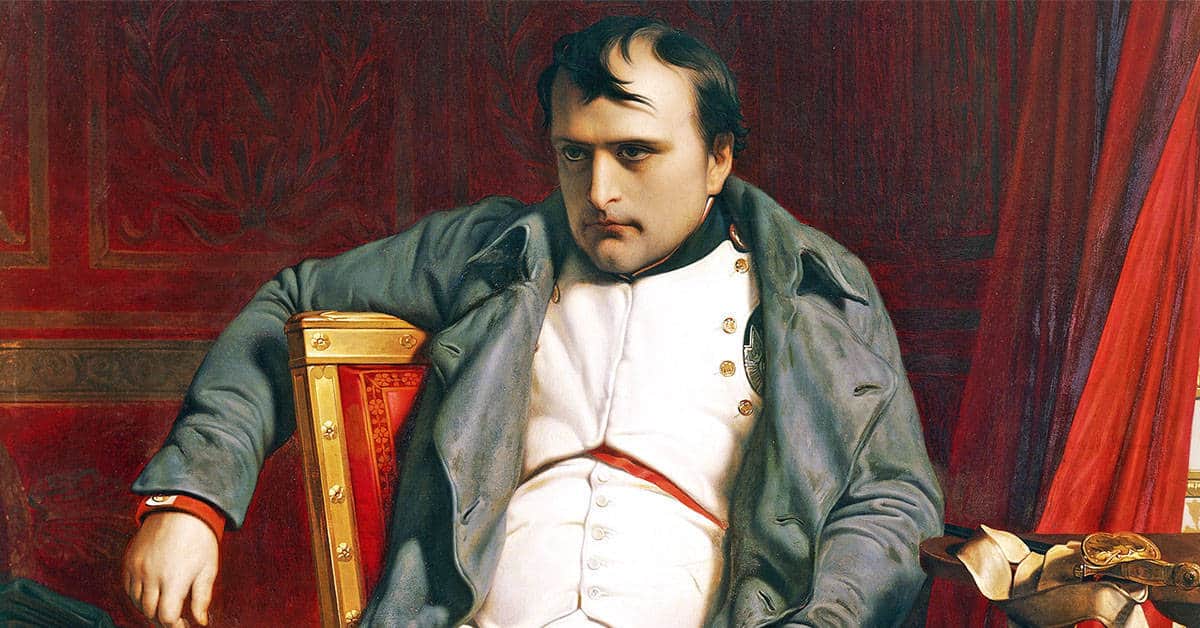The Hundred Days is the term given to the period between Napoleon’s return from exile to the second restoration of King Louis XVIII. The entire period is actually 111 days, but it was an extremely busy time as it included the famous Waterloo Campaign, the Neapolitan War, and several other battles. In what proved to be Napoleon’s last stand, the former Emperor of France managed to raise an army one last time in an attempt to recapture past glories.
Napoleon Returns from Exile
Napoleon had abdicated his throne on April 6, 1814, which paved the way for Louis XVIII to take the crown; it also led to the first Bourbon Restoration. Napoleon went to Elba but only remained in exile for just over nine months before he decided to come back and retake power. During his exile, the coalition forces that defeated him tried to redefine the borders of Europe at the Congress of Vienna which began in November 1814.

As Napoleon had anticipated, it was a difficult task since each of the major powers has its own set of conflicting demands. For example, Tsar Alexander of Russia wanted to absorb most of Poland, Prussia demanded Saxony, Austria wanted northern Italy (and didn’t want Russia or Prussia to get what they desired) and the Great Britain representative, Viscount Castlereagh, supported France and Austria and was at odds with his parliament. Matters became so tense that there was a possibility of war between members of the coalition at one stage.
While Napoleon was in Elba, he saw that the people of France were not happy about the once great empire dwindling. Also, there were numerous stories of Bourbon princes treating veterans of the Grand Armée poorly, and Louis XVIII was not a popular ruler. Napoleon took advantage of the situation by sailing towards France with a view to staking a claim to rule France again, resume his European conquest and liberate France from the allies. He landed at Cannes on March 1, 1815, with approximately 1,500 men and marched towards Paris immediately. Upon learning of the threat, Louis XVIII fled the capital on March 13 and Napoleon arrived on March 20.

Napoleon Builds an Army
Napoleon’s march to Paris was far from uneventful. He was warmly received when he arrived in France barring the Royalist stronghold of Provence. Napoleon decided to march through the Alps thus avoiding the enemy region. His small force was woefully insufficient at first, but the former emperor used his charisma to grow his original group into a formidable army quickly. He achieved this by promising free elections, political reform, and peace for French citizens. The growing tensions between the Royals and the lower classes had reached a breaking point, so Napoleon had timed his return perfectly.
Napoleon appeared at Grenoble a few days after leaving Cannes, and he rallied more troops behind him by claiming he would save the people from the slavery imposed on them by priests and nobles. A day after the 5th Infantry Regiment at Grenoble pledged allegiance to Napoleon; the 7th Infantry Regiment followed suit. When faced with the royalist 5th Infantry at Grenoble, Napoleon reportedly opened his coat and said: “If any of you will shoot his Emperor, here I am.” After a tense silence, a cheer went up: “Long live the emperor!”
His former commander, Ney, was sent to capture him and proclaimed that Napoleon should be brought to Paris in an iron cage. With 6,000 men, he was determined to carry out his mission, but when he faced Napoleon on March 14, he was overcome by emotion upon meeting his one-time leader and fell in line along with his army. By the time Napoleon arrived in Paris, his army had swelled. Within three weeks, Napoleon went from irrelevance to outright threat once again. The coalition had to set aside their differences and tackle the problem.

